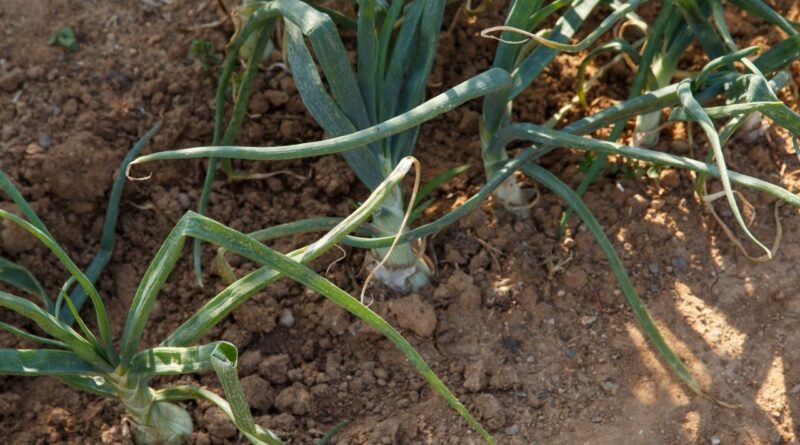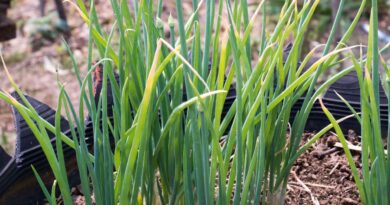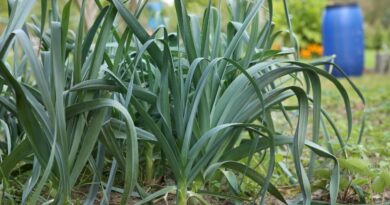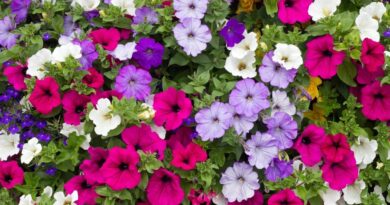How To Grow Red Onion
Red onion (also known as purple onions) is a vegetable that belongs to the Allium family. It is one of the most widely grown and consumed vegetables in Kenya. It is a biennial plant but it is grown as an annual crop.
Ecology
Altitude: Grows well in altitudes of upto 2500m above sea level.
Annual rainfall: 650-800mm
Temperature: Seedlings require an optimum temperature of 20-250C. Vegetative growth requires 13-240C while bulb development requires 18-260C.
Soil Type: Fertile, loose, well draining soil
Soil pH: 6.0-7.5
Sowing Method
Varieties; The most common varieties grown in Kenya are Red creole and Bombay red. Other varieties include Neptune F1, Red star F1, Tropicana F1, Red pinoy F1, Red passion F1, Russet F1, Sivan F1, Jambar F1, Red coach F1, Rogue F1.
Seed rate: 1.5-2.5kg per acre depending on variety
Sowing Depth: Sow seeds in rows about 15 cm apart, 1 cm deep and cover lightly with soil and mulch.
Germination Period: Takes 7-10 days
Transplanting Period: Seedlings are transplanted 6-8 weeks after sowing. They are transplanted in 2.5-3 cm deep trenches.
Spacing: 8-10 cm between plants
30 cm between rows
Light requirement: Full sun
Water: Onions require light and frequent watering. They require about 1 inch of water per week. Watering should be reduced and eventually discontinued towards harvest.
Feeding:
Seedlings
Prepare the nursery bed by adding well decomposed manure or compost and mixing it with the soil. After sowing, the nursery should be drenched with a seaweed fertiliser to break seed dormancy and ensure uniform germination. Subsequent applications of seaweed should be done every 14 days at a rate of 5ml per 20 litre of water until ready for transplanting. Another application can be done immediately after transplanting to minimise transplanting shock.
Transplants
Apply manure at the rate of 2-3 tonnes per acre into the final planting beds/field at least 1 month before planting. Apply humic powder into the beds/field at the rate of 5kg/acre or mix it with manure at the rate of 1kg humic powder into 1 ton of manure before application.
For phosphorus deficient soils, add bone meal fertiliser (200kg per acre) or rock phosphate (100kg per acre) .
Compost can be used as an alternative to manure. Apply a thick layer of compost about 1-3 inches before planting. Compost can also be added as a topdress throughout the growing season.
Seaweed fertiliser should be sprayed as a foliar feed at the rate of 10ml of seaweed per 20 litres of water at 15 day intervals throughout the growing season. Discontinue fertilising approximately 4 weeks prior to harvest.
Harvest period: 150 days
Harvesting and Storage: Onions are ready to harvest when the leaves collapse or when 75% of the tops of the plants have dried and fallen over. After harvest, onions need to be cured to prolong their shelf life. Curing takes place in the field or in a protected environment away from adverse weather conditions. Place the onions in rows with leaves partially covering the bulbs to prevent sunburn or greening. Curing takes 2-3 weeks depending on the environmental conditions.
Common Challenges
Pests
Onion thrips- Adult thrips and nymphs feed on the base of the plant within the leaf sheaths, attacked leaves have sunken silvery patches. Under severe attack the entire plant appears silvery and later they wither, dry up and die. The pest excreta appears as black spots on the silvery leaves.
Onion fly- Onion fly maggots are the most destructive stage of the fly. They eat lateral roots causing tunnels into the taproot. They are also found inside developing onion bulbs and their feeding exposes the plant to infection by diseases like bacterial soft rot.
Nematodes- Stem and bulb nematodes affect onion and garlic production. Migratory feeding by these nematodes creates cavities leading to shortened, distorted or collapsing leaves and bloated tissues. The bulbs often soften at the neck. Bacteria, fungi and onion maggots may then cause soft rot and accelerate the decay of the bulbs.
Diseases
Rust- This is a fungal disease caused by high humidity, high temperatures and overcrowding. It appears as small reddish dusty spots on leaves. Heavily infected leaves turn yellow and die prematurely.
Purple blotch- A fungal disease that is characterised by small white spots on the foliage. Under moist conditions the spots grow into large purplish blotches often surrounded by a yellow to orange border. Lesions extend to encircle the leaf which leads to its collapse. Infection may spread to the bulb where it causes a wet orange rot starting at the neck.
Pink rot- This disease results from nutrient deficiencies and stress caused by extremely dry conditions. It appears as light pink to yellowish-brown discoloration on roots that becomes dark pink then red and eventually purple. Under severe conditions, roots eventually shrivel, become brittle and die.
Onion downy mildew- A fungal disease caused by cool, humid and poor drainage conditions. It is characterised by formation of lesions near the tips of the older leaves, yellow patches covered with grey wet fields. Leaf tips shrink, turn pale brown and later die.
Neck rot- This disease is caused by a fungus that enters the onions through wounds or cracks in the fleshy neck part of the bulb. The disease is usually visible when onions are in store. Top part of the bulb will turn browner and the skin will be darker brown. The top part of the bulb will be softer than the lower parts. A grey mould appears, sometimes speckled with small black spots.
Fusarium basal rot- This disease is common where onions are grown under high temperature conditions. Infection is promoted by injuries to the root system. The affected leaves yellow at the tip, and at later stages shrivel and decay. Affected roots are dark brown, flattened, hollow and transparent. Diseased plants can be pulled out easily because the root system is rotted.
Sour skin- The symptoms for this disease are usually visible only after onions are harvested. The infected layers of the onion are slimy and yellow. The upper portion of the bulb shrinks and in advanced stages the outer dry skin readily slips off while handling. Outer layers often become darkened and almost orange. Decay of inner layers leads to a soft rot that has a sour, vinegar-like odour.
Tips:
- Weeds are a big challenge when growing onions. Regular weeding should be done at intervals of between 15 and 30 days depending on weed density.
- Unearthing is removal of excess soil around the bulb to allow the bulb to expand and develop well. Unearthing also facilitates colouring and prevents rotting. Unearthing should be done during 2nd and subsequent weeding and is done by removing the soil from the bulbs by hand. Eventually the onions should look like they are sitting on top of the ground. Avoid damaging or exposing roots.
- The yield of onions is determined by the number of leaves that are formed prior to bulbing.
- Succession planting can be done every 3-4 weeks for continual supply.




